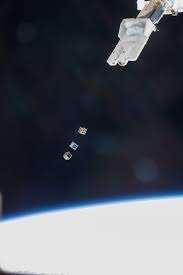
Breaking News
 Why Dual Engine Failure Changes Everything -- Louisville Crash Update
Why Dual Engine Failure Changes Everything -- Louisville Crash Update
 Transforming Storage Shelf / Workbench - Small Space Organization
Transforming Storage Shelf / Workbench - Small Space Organization
 Our 3-Step Strategy for a Stress-Free Pantry
Our 3-Step Strategy for a Stress-Free Pantry
 BEHIND THE DEEP STATE | The War on Farms
BEHIND THE DEEP STATE | The War on Farms
Top Tech News
 HUGE 32kWh LiFePO4 DIY Battery w/ 628Ah Cells! 90 Minute Build
HUGE 32kWh LiFePO4 DIY Battery w/ 628Ah Cells! 90 Minute Build
 What Has Bitcoin Become 17 Years After Satoshi Nakamoto Published The Whitepaper?
What Has Bitcoin Become 17 Years After Satoshi Nakamoto Published The Whitepaper?
 Japan just injected artificial blood into a human. No blood type needed. No refrigeration.
Japan just injected artificial blood into a human. No blood type needed. No refrigeration.
 The 6 Best LLM Tools To Run Models Locally
The 6 Best LLM Tools To Run Models Locally
 Testing My First Sodium-Ion Solar Battery
Testing My First Sodium-Ion Solar Battery
 A man once paralyzed from the waist down now stands on his own, not with machines or wires,...
A man once paralyzed from the waist down now stands on his own, not with machines or wires,...
 Review: Thumb-sized thermal camera turns your phone into a smart tool
Review: Thumb-sized thermal camera turns your phone into a smart tool
 Army To Bring Nuclear Microreactors To Its Bases By 2028
Army To Bring Nuclear Microreactors To Its Bases By 2028
 Nissan Says It's On Track For Solid-State Batteries That Double EV Range By 2028
Nissan Says It's On Track For Solid-State Batteries That Double EV Range By 2028
International Space Station crew deploys CubeSats

Another round of CubeSats, including eight Planet Lab Dove Satellites, were deployed from the International Space Station (ISS) by the Expedition 47 crew. A total of 17 tiny spacecraft were deployed from NanoRacks CubeSat Deployer (NRCSD) at the end of the Japanese Remote Manipulator System.
Starting late last week, crew members inserted the NRCSD inside the Japanese Kibo module's airlock and attached it to the Multi-Purpose Experiment Platform (MPEP). Over the weekend, the airlock was sealed and leak checks performed before the Japanese robotic arm grappled the MPEP and positioned it at the deployment location.
Two Lemur-2 satellites floating away from the International Space Station. Photo Credit: NASA
"Successful deployment this morning," the official twitter account for NanoRacks read May 16.
The first deployment time was at 5:05 a.m. CDT (10:05 GMT) Monday morning, while the second was at 9:40 a.m. (14:40 GMT) and included the 100th CubeSat deployed by the NRCSD system.
The NanoRacks company sends microsatellites to the station on nearly every commercial cargo ship. The first deployment this round included the University of Colorado at Bolder-built MinXSS and University of Michigan-built CADRE CubeSats; the second of the morning was the grade-school built STMSat-1 and the Network & Operation Demonstration Satellite (NODeS) 1 and 2 from NASA Ames.
MinXSS is a three-unit CubeSat designed to gather scientific data to better understand the energy of soft X-ray emissions of solar flares and their impact on Earth's atmosphere. CADRE, which stands for CubeSat investigating Atmospheric Density Response to Extreme driving, is another three unit satellite. It is sponsored by the National Science Foundation with a goal of studying space weather.
STMSat-1 was built by students at St. Thomas More Cathedral School and was the first satellite designed by elementary school students. The CubeSat will image Earth.
On Tuesday, more CubeSats were deployed at 3:45 and 7:00 a.m. CDT (8:45 and 12:00 GMT) as well as at 6:00 p.m. (23:00 GMT) and 9:15 p.m. (02:15 GMT Wednesday). This time, it was the Planet Labs-built Dove Satellites. They will be taking images of Earth for a number of humanitarian and environmental purposes. In total, eight Dove Satellites were launched from the NRCSD in four different rounds.
The Dove Satellites, Flock 1 and 2, are a constellation that produces high-resolution images of Earth with a resolution of 10 to 16 feet (3 to 5 meters). This round is part of the Flock 2e and 2e' groups. There will be a total of 32 satellites deployed in the next number of months.
A final round of satellites were deployed Wednesday morning at 2:05 and 6:15 a.m. CDT (7:05 and 11:15 GMT). They included four Lemur-2 CubeSats, built and operated by Spire Global. They will be used for Earth observation, maritime monitoring, communications, meteorology, and science.
All 17 satellites will orbit Earth for a number of months, conducting missions dedicated to scientific research, education, and Earth observation, before their orbits decay low enough to allow the CubeSats to burn up in the atmosphere.

 Carbon based computers that run on iron
Carbon based computers that run on iron


